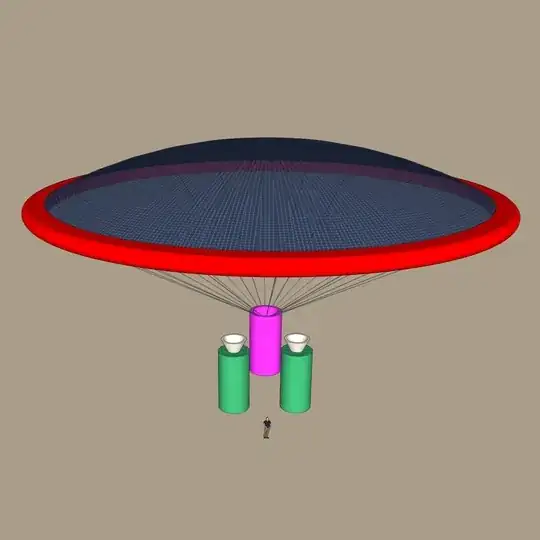I have an idea that the space elevator can be build in the following conditions:
- Not a classic theory. No cable. No Geostatic orbit. Not equator platform position
- The possible platform / base position is Earth's south magnetic pole - Antarctica, or north magnetic pole in Arctic.
- The lifting force is Earth's magnetic field.
- The lift design is a huge ring (more than 100 m) with a magnetic coil.
- The wire of the coil is a superconductor for a high current.
- The surface of the ring is closed with parabolic solar energy collector with lens in the focus. The lens is the laser beam receiver from the ground platform.
- Near the focus are located payload spacecrafts with engines for changing the motion vector after dumping and during the fall.
Let us clarify the question in the following way: 1) “What conditions and parameters of the electromagnet ring or coil and of other components in the assembled structure (elevator) will satisfy the condition that the Earth’s magnetic field will be enough to lift up this structure.” The parameters can be like the following: radius of the ring R (m), number of circuits in a coil N (pcs.), current I (A), weight M (kg) and others required for calculations.
The additional questions: 2) “What height can be reached if the method is possible at all” 3) “Is it possible somehow to focus the Earth’s magnetic field of some circle area in the pole which will help to increase the chances for questions 1 and 2”
Legends:
Item 4 - ring with coil is red color
Item 5 - wire is inside the coil inside the ring (4)
Item 6 - solar panels - energy collector is transparent blue
Item 6 - lens in the focus - laser beam receiver - purple
Item 7 - payload - green cylinders
Updates (20.11.19). I see one more reason that the elevator will not work out. While the electromagnetic field inside the ring will be oriented in the opposite direction to the Earth’s magnetic field creating the lifting force, the electromagnetic field outside the ring will goes the same direction as the Earth magnetic field and will pull the ring down. Only in case if the radius of the ring will be bigger than the radius of the Earth’s magnet we will not face this issue until some height is reached.
The picture of 3dmodel is updated with better rendering (20.11.19)
